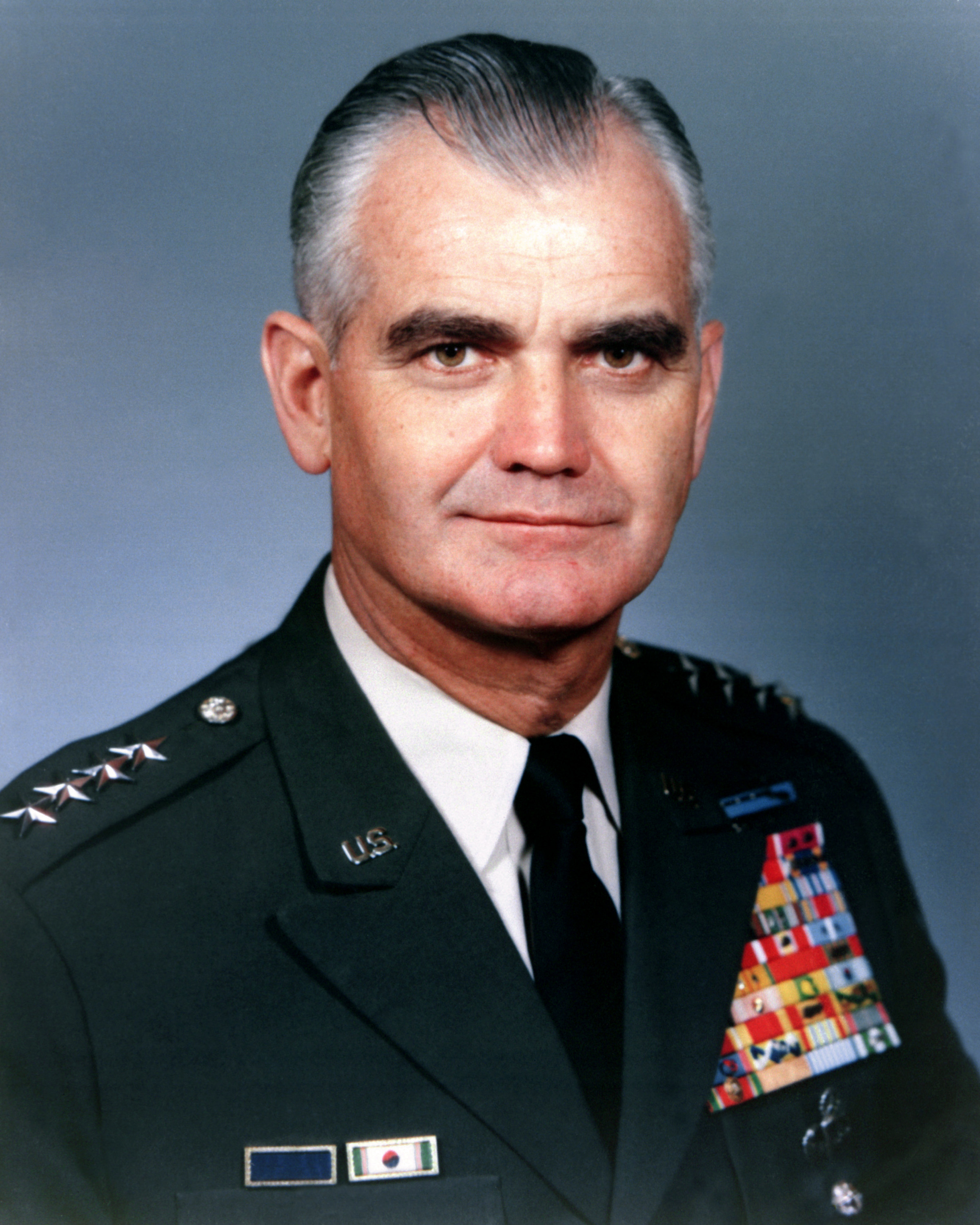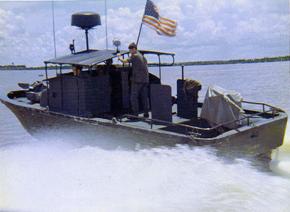|
Battle Of Bến Tre
The Battle of Bến Tre took place during the Tet Offensive of the Vietnam War when Vietcong (VC) forces attacked Bến Tre, the capital of Kien Hoa Province, on 31 January 1968. The battle lasted until 5 February when U.S. and South Vietnamese forces ejected the VC who suffered 328 killed. In the United States, the battle is best remembered for a quote from an unnamed American Major, reported by journalist Peter Arnett, that "It became necessary to destroy the town to save it." This quote has often been paraphrased as "We had to destroy the village in order to save it." The veracity of the original quote has often been questioned. Background Wedged between two branches of the Mekong River and crisscrossed by several smaller canals and rivers, Bến Tre lies 13.3 km south of Mỹ Tho. In 1967 it had a population of approximately 74,544 and was the capital of Kien Hoa Province, an island province surrounded by water with no bridge links to any of its four neighboring provin ... [...More Info...] [...Related Items...] OR: [Wikipedia] [Google] [Baidu] |
Tet Offensive
The Tet Offensive was a major escalation and one of the largest military campaigns of the Vietnam War. The Viet Cong (VC) and North Vietnamese People's Army of Vietnam (PAVN) launched a surprise attack on 30 January 1968 against the forces of the South Vietnamese Army of the Republic of Vietnam (ARVN), the United States Armed Forces and their allies. It was a campaign of surprise attacks against military and civilian command and control centers throughout South Vietnam. The name is the truncated version of the Lunar New Year festival name in Vietnamese, Tết Nguyên Đán, with the offense chosen during a holiday period as most ARVN personnel were on leave. The purpose of the wide-scale offensive by the Hanoi Politburo was to trigger political instability in a belief that mass armed assault on urban centers would trigger defections and rebellions. The offensive was launched prematurely in the early morning hours of 30 January in large parts of the I and II Corps Tactical Z ... [...More Info...] [...Related Items...] OR: [Wikipedia] [Google] [Baidu] |
IV Corps (South Vietnam)
The IV Corps () was a corps of the Army of the Republic of Vietnam (ARVN), the army of the nation state of South Vietnam that existed from 1955 to 1975. It was one of four corps in the ARVN, and it oversaw the Mekong Delta region of the country. The Mekong Delta was the heartland of agricultural South Vietnam, it encompassed the fertile alluvial plains formed by the Mekong River and its main tributary, the Bassac River. With its sixteen provinces, the Delta contained about two-thirds of the nation's population and yielded the same proportion in rice production. The terrain of IV Corps differed radically from other regions. Flat and mostly uncovered, it consisted of mangrove swamps and ricefields crisscrossed by an interlocking system of canals, natural and artificial. Except for some isolated mountains to the west near the Cambodian border, few areas in the Delta had an elevation of more than above sea level. During the monsoon season, most of the swampy land north of Route QL- ... [...More Info...] [...Related Items...] OR: [Wikipedia] [Google] [Baidu] |
Hàm Luông River
The Hàm Luông River () is a branch of Mekong River in the Mekong Delta region, Vietnam Vietnam, officially the Socialist Republic of Vietnam (SRV), is a country at the eastern edge of mainland Southeast Asia, with an area of about and a population of over 100 million, making it the world's List of countries and depende .... It flows for through Bến Tre Province.''Vietnam Administrative Atlas'', NXB Bản Đồ, 2004 It is the border of Châu Thành, Bến Tre, Giồng Trôm and Ba Tri, and Chợ Lách, Mỏ Cày Nam, Mỏ Cày Bắc and Thạnh Phú. See also * Ham Luong Bridge References Rivers of Bến Tre province Rivers of Vietnam {{Vietnam-river-stub ... [...More Info...] [...Related Items...] OR: [Wikipedia] [Google] [Baidu] |
Patrol Boat, River
Patrol Boat, River, or PBR, is the United States Navy designation for a small rigid- hulled patrol boat used in the Vietnam War from March 1966 until 1975. They were deployed in a force that grew to 250 boats, the most common craft in the River Patrol Force, Task Force 116, and were used to stop and search river traffic in areas such as the Mekong Delta, the Rung Sat Special Zone, the Saigon River and in I Corps, in the area assigned to Task Force Clearwater, in an attempt to disrupt weapons shipments. In this role, they frequently became involved in firefights with enemy soldiers on boats and on the shore, were used to insert and extract Navy SEAL teams, and were employed by the United States Army's 458th Transportation Company, known as the 458th Sea Tigers. The PBR was replaced by the Special Operations Craft – Riverine (SOC-R). Design The PBR was a versatile boat with a fiberglass hull and water jet drive which enabled it to operate in shallow, weed-choked riv ... [...More Info...] [...Related Items...] OR: [Wikipedia] [Google] [Baidu] |
Mobile Riverine Force
In the Vietnam War, the Mobile Riverine Force (MRF) (after May 1967), initially designated Mekong Delta Mobile Afloat Force, and later the Riverines, were a joint US Army and US Navy force that comprised a substantial part of the brown-water navy. It was modeled after lessons learned by the French experience in the First Indochina War of Dinassaut and had the task of both transport (of soldiers and equipment) and combat. The primary land base was at Đồng Tâm Base Camp, with a floating base which operated in the major rivers of the Mekong Delta. Soldiers and sailors went out in river boats from the floating base to assault the Viet Cong. During part of the 1968-69 period, there were two such mobile bases operating in different parts of the Delta, Mobile Riverine Groups Alpha and Bravo. The MRF played a key role in the Tet Offensive. Concept of operations The Mekong Delta Mobile Afloat Force was originally conceived as providing an all weather "strike" capability in the M ... [...More Info...] [...Related Items...] OR: [Wikipedia] [Google] [Baidu] |
Republic Of Vietnam National Police
The Republic of Vietnam National Police – RVNP (), Police Nationale de la République du Vietnam or Police Nationale for short ( – CSQG) in French, was the official South Vietnamese national police force from 1962 to 1975, operating closely with the Army of the Republic of Vietnam (ARVN) during the Vietnam War. __TOC__ History The Republic of Vietnam National Police was officially created by President Ngô Đình Diệm's national decree in June 1962, integrating all the existing internal security and paramilitary agencies raised by the French Union authorities during the First Indochina War between 1946 and 1954, into a single National Police Force who answered to the Directorate General of National Police (Vietnamese: ''Tổng cục cảnh sát quốc gia'' – TCCSQG). These included the Vietnamese section of the indochinese ''Sûreté Générale'' secret police, the Saigon Municipal Police, elements of the colonial National Guard of South Vietnam ( – GNVS, or ''Vệ ... [...More Info...] [...Related Items...] OR: [Wikipedia] [Google] [Baidu] |
Central Intelligence Agency
The Central Intelligence Agency (CIA; ) is a civilian foreign intelligence service of the federal government of the United States tasked with advancing national security through collecting and analyzing intelligence from around the world and conducting covert operations. The agency is headquartered in the George Bush Center for Intelligence in Langley, Virginia, and is sometimes metonymously called "Langley". A major member of the United States Intelligence Community (IC), the CIA has reported to the director of national intelligence since 2004, and is focused on providing intelligence for the president and the Cabinet. The CIA is headed by a director and is divided into various directorates, including a Directorate of Analysis and Directorate of Operations. Unlike the Federal Bureau of Investigation (FBI), the CIA has no law enforcement function and focuses on intelligence gathering overseas, with only limited domestic intelligence collection. The CIA is responsibl ... [...More Info...] [...Related Items...] OR: [Wikipedia] [Google] [Baidu] |
Military Assistance Command, Vietnam
The U.S. Military Assistance Command, Vietnam (MACV) was a joint-service command of the United States Department of Defense, composed of forces from the United States Army, United States Navy, and United States Air Force, as well as their respective special operations forces. MACV was created on 8 February 1962, in response to the increase in United States military assistance to South Vietnam. MACV was implemented to assist and oversee the Military Assistance Advisory Group (MAAG) Vietnam while the Viet Cong insurgency was under way. It was reorganized on 15 May 1964 and absorbed MAAG Vietnam when the deployment of combat units became too large for the advisory group to control. General Paul D. Harkins was the first commanding general of MACV (COMUSMACV), and was previously the commander of MAAG Vietnam. After reorganization he was succeeded by General William Westmoreland in June 1964, followed by General Creighton W. Abrams (July 1968) and General Frederick C. Weyand (June ... [...More Info...] [...Related Items...] OR: [Wikipedia] [Google] [Baidu] |
Vĩnh Long
Vĩnh Long ɨn˨˩˦:lawŋ˧˧is a city and the capital of Vĩnh Long Province in Vietnam's Mekong Delta. Geography Vĩnh Long covers and has a population of 200,120 (as of 2018). The name was spelled 永 隆 ("eternal prosperity") in the former Hán-Nôm writing system. Topography Vĩnh Long is on the Cổ Chiên River, which branches out from the Mekong River at the narrows of Mỹ Thuận about upstream, only to meet it later downstream. Across the Cổ Chiên river from Vĩnh Long are the An Binh and Bình Hòa Phước islands, some across, with the Mekong River on the other side. A number of canals run through Vĩnh Long, with tall vehicular bridges crossing them. Transport by boat is possible, although parts of the town, particularly An Binh, become unreachable at low tide. Vĩnh Long is about two hours from the large city of Cần Thơ in the adjacent Hậu Giang Province, and about three hours from Saigon Ho Chi Minh City (HCMC) ('','' TP.HCM; ), comm ... [...More Info...] [...Related Items...] OR: [Wikipedia] [Google] [Baidu] |
Cai Lậy (town)
Cai Lậy is a town of Tien Giang province in the Mekong Delta region of Vietnam Vietnam, officially the Socialist Republic of Vietnam (SRV), is a country at the eastern edge of mainland Southeast Asia, with an area of about and a population of over 100 million, making it the world's List of countries and depende .... The town was separated from Cai Lậy District in 2013. References Districts of Tiền Giang province County-level towns in Vietnam {{TienGiang-geo-stub ... [...More Info...] [...Related Items...] OR: [Wikipedia] [Google] [Baidu] |
Mekong Delta
The Mekong Delta ( or simply ), also known as the Western Region () or South-western region (), is the list of regions of Vietnam, region in southwestern Vietnam where the Mekong, Mekong River River delta, approaches and empties into the sea through a network of distributary, distributaries. The Mekong delta region encompasses a large portion of south-western Vietnam, of an area of over . The size of the area covered by water depends on the season. Its wet coastal geography makes it an important source of agriculture and aquaculture for the country. The delta has been occupied as early as the 4th century BC. As a product of Khmer people, Khmer, Vietnamese people, Vietnamese, Chinese, and French colonial empire, French settlement in the region, the delta and its waterways have numerous names, including the Khmer language, Khmer term Bassac River, Bassac to refer to the lower basin and the largest river branch flowing through it. After the 1954 Geneva Conference, Vietnam was split ... [...More Info...] [...Related Items...] OR: [Wikipedia] [Google] [Baidu] |




